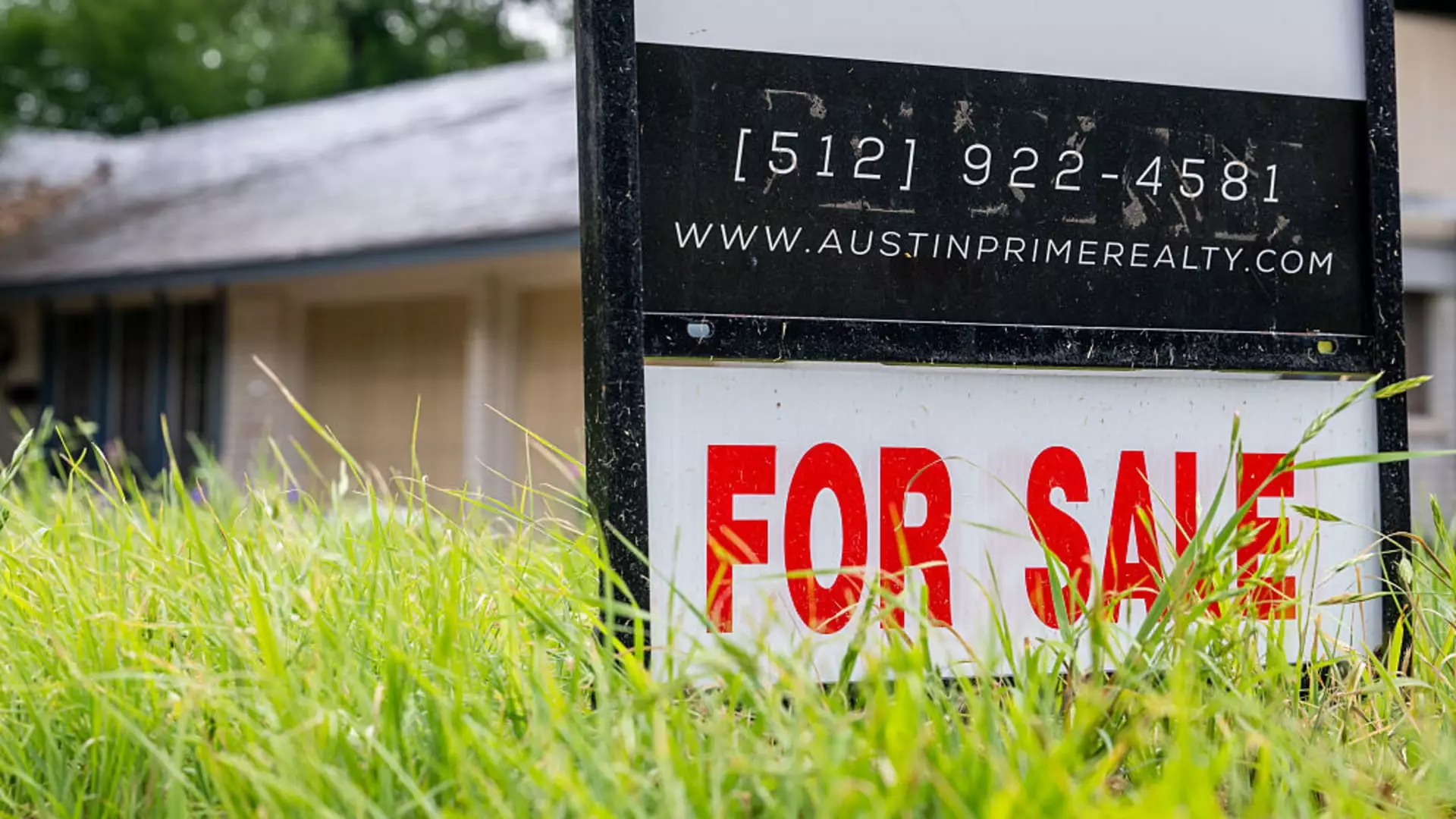In an economy teetering on the brink of uncertainty, the housing market seems caught in a paradox. While mortgage rates have seen only marginal shifts, the reaction from potential homebuyers has been anything but muted. A recent report from the Mortgage Bankers Association highlighted a sobering 4% decline in mortgage applications for purchasing homes. This drop isn’t just a statistic—it reflects growing apprehension about a faltering economy that leaves prospective buyers questioning whether now is the right time to invest.
The average rate for a 30-year mortgage did decrease slightly to 6.89%, leading one to expect a surge in homebuying activity. However, such a reduction comes against the stark backdrop of increased economic anxieties. Even when compared to trends a year ago, when rates were considerably higher, the current climate poses a significant deterrent for potential buyers. The housing inventory may slowly be increasing, but the reluctance of buyers to dive in is none less than alarming.
Refinancing: A Beacon in the Storm?
Interestingly, while home purchasing applications have dwindled, mortgage refinance applications actually surged by 42% compared to the same week last year. This seeming contradiction may suggest that while people are wary of buying new homes, many existing homeowners are attempting to take advantage of what they hope might be the last chance to refinance before rates climb higher. The average loan amount for refinances has dipped to just under $290,000, marking a three-month low. This figure presents a portrait of borrowers holding out for a potential more significant decrease in rates, seeking to minimize their financial commitments.
What’s particularly troubling is the general sentiment permeating the air. The foresight of economic instability does indeed foster an atmosphere where hesitation reigns supreme among homebuyers. The decrease in applications for purchases being described as reaching the “slowest pace since February” adds a notable urgency to resolve the issues at hand. Could it be that the labor market’s instability is instilling fear of taking on new financial commitments among buyers?
Government’s Role in Stabilization
This is where the government could play an instrumental role. Despite the shocking figures, unknown solutions are lurking around the corner. If policymakers can act decisively to inspire confidence—working towards stabilizing the economy and reinforcing job security—this might jumpstart the housing market back to life. The urgency is palpable; first-time homebuyers, who could invigorate the market, are likely feeling the current economic pressures acutely.
In the world of mortgage rates, numbers reveal a complex narrative. How lenders respond to these shifting tides can either exacerbate the situation or pull the housing market back from the precipice. The confluence of rising fears and proactive policies could potentially alter the course for homebuyers and the overall market. Therein lies an opportunity—not just for buyers but for the entire economy, anxious to regain stability and growth.

